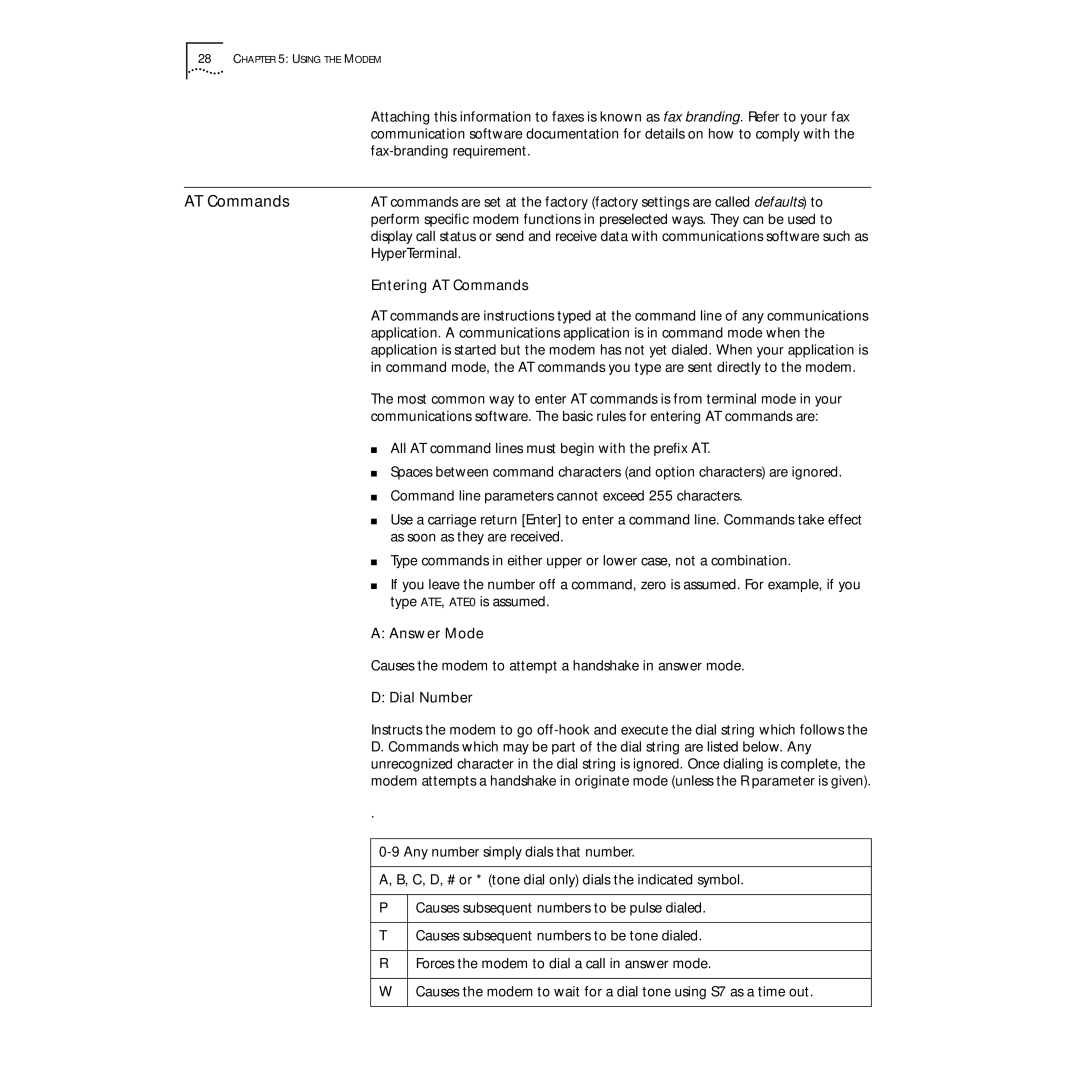28CHAPTER 5: USING THE MODEM
| Attaching this information to faxes is known as fax branding. Refer to your fax | ||
| communication software documentation for details on how to comply with the | ||
| |||
|
|
| |
AT Commands | AT commands are set at the factory (factory settings are called defaults) to | ||
| perform specific modem functions in preselected ways. They can be used to | ||
| display call status or send and receive data with communications software such as | ||
| HyperTerminal. | ||
| Entering AT Commands | ||
| AT commands are instructions typed at the command line of any communications | ||
| application. A communications application is in command mode when the | ||
| application is started but the modem has not yet dialed. When your application is | ||
| in command mode, the AT commands you type are sent directly to the modem. | ||
| The most common way to enter AT commands is from terminal mode in your | ||
| communications software. The basic rules for entering AT commands are: | ||
| ■ All AT command lines must begin with the prefix AT. | ||
| ■ Spaces between command characters (and option characters) are ignored. | ||
| ■ Command line parameters cannot exceed 255 characters. | ||
| ■ Use a carriage return [Enter] to enter a command line. Commands take effect | ||
|
| as soon as they are received. | |
| ■ Type commands in either upper or lower case, not a combination. | ||
| ■ If you leave the number off a command, zero is assumed. For example, if you | ||
|
| type ATE, ATE0 is assumed. | |
| A: Answer Mode | ||
| Causes the modem to attempt a handshake in answer mode. | ||
| D: Dial Number | ||
| Instructs the modem to go | ||
| D. Commands which may be part of the dial string are listed below. Any | ||
| unrecognized character in the dial string is ignored. Once dialing is complete, the | ||
| modem attempts a handshake in originate mode (unless the R parameter is given). | ||
| . |
|
|
|
|
| |
| |||
|
| ||
| A, B, C, D, # or * (tone dial only) dials the indicated symbol. | ||
|
|
|
|
| P |
| Causes subsequent numbers to be pulse dialed. |
|
|
|
|
| T |
| Causes subsequent numbers to be tone dialed. |
|
|
|
|
| R |
| Forces the modem to dial a call in answer mode. |
|
|
| |
| W | Causes the modem to wait for a dial tone using S7 as a time out. | |
|
|
|
|
